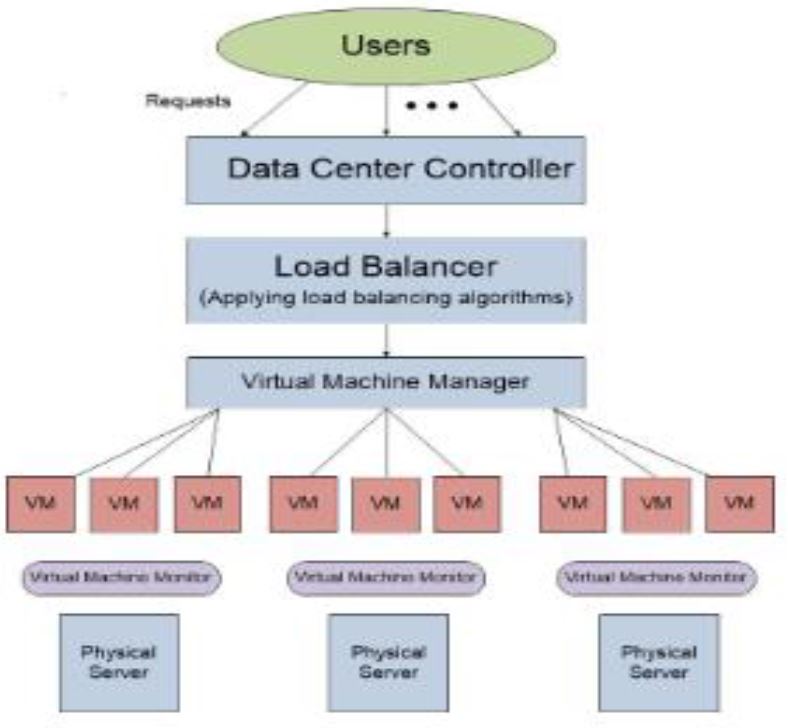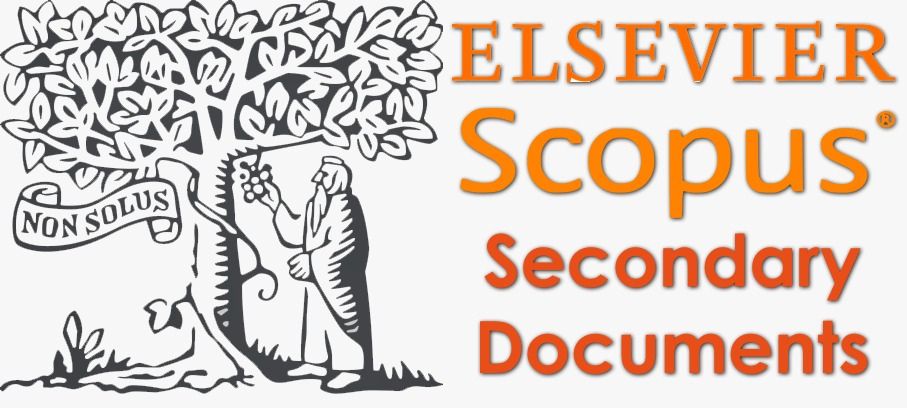HYBRID LOAD BALANCING ALGORITHM FOR FOG COMPUTING ENVIRONMENT
DOI:
https://doi.org/10.15282/ijsecs.8.1.2022.2.0092Keywords:
Cloud Computing, Computing Architecture, Internet of things, Fog Computing, Load BalancingAbstract
Fog computing has become a new trend in the Internet of things domain and cloud computing applications. It is a novel model to achieve the availability, flexibility and better responding time. In spite of that, there is so many challenges facing computing environments such as the misuse of the resources and load-balancing between them, which has a major effect on performance. The requirement of effective and robust load-balancing algorithms is one of the most significant interest in this field. Many researchers suggested various load-balancing algorithms in fog computing, but there is still inefficiency in the system performance and misalignment in load -balancing. This paper will provide a description of numerous concepts such as computing fog, fog nodes, load balancing and then we recommend a load-balancing algorithm to enhance the fog-computing environment performance, which is a hybrid algorithm benefits from the optimizing processing time (OPT) algorithms. In order to explore the proposed algorithm performance, a comparison made with other algorithms. Results indicates that using the proposed optimizing processing time algorithm in load-balancing algorithm has superior response and processing time than the compared algorithms to user requests, and the data total cost centre’s as well.
References
C. Li, H. Zhuang, Q. Wang, and X. Zhou, “SSLB: self-similarity-based load balancing for large-scale fog computing,” Arab.
J. Sci. Eng., vol. 43, no. 12, pp. 7487–7498, 2018.
L. Shooshtarian, D. Lan, and A. Taherkordi, “A clustering-based approach to efficient resource allocation in fog computing,”
in International Symposium on Pervasive Systems, Algorithms and Networks, pp. 207–224, 2019.
C. Mouradian, D. Naboulsi, S. Yangui, R. H. Glitho, M. J. Morrow, and P. A. Polakos, “A comprehensive survey on fog
computing: State-of-the-art and research challenges,” IEEE Commun. Surv. tutorials, vol. 20, no. 1, pp. 416–464, 2017.
P. Hu, S. Dhelim, H. Ning, and T. Qiu, “Survey on fog computing: architecture, key technologies, applications and open
issues,” J. Netw. Comput. Appl., vol. 98, pp. 27–42, 2017.
P. Asghari, A. M. Rahmani, and H. H. S. Javadi, “Internet of Things applications: A systematic review,” Comput. Networks,
vol. 148, pp. 241–261, 2019.
F. Bonomi, R. Milito, J. Zhu, and S. Addepalli, “Fog computing and its role in the internet of things,” in Proceedings of the
first edition of the MCC workshop on Mobile cloud computing, pp. 13–16, 2012.
E. Marín-Tordera, X. Masip-Bruin, J. García-Almiñana, A. Jukan, G.-J. Ren, and J. Zhu, “Do we all really know what a fog
node is? Current trends towards an open definition,” Comput. Commun., vol. 109, pp. 117–130, 2017.
O. C. A. W. Group, “OpenFog reference architecture for fog computing,” OPFRA001, vol. 20817, p. 162, 2017.
M. Iorga, L. Feldman, R. Barton, M. J. Martin, N. S. Goren, and C. Mahmoudi, “Fog computing conceptual model,” Special
Publication (NIST SP), National Institute of Standards and Technology, Gaithersburg, MD, 2018,
https://doi.org/10.6028/NIST.SP.500-325 (Accessed September 1, 2021).
T. Nazar, N. Javaid, M. Waheed, A. Fatima, H. Bano, and N. Ahmed, “Modified shortest job first for load balancing in cloudfog computing,” in International Conference on Broadband and Wireless Computing, Communication and Applications, pp.
–76, 2018.
C. F. C. Solutions, “Unleash the power of the Internet of Things,” Cisco Syst. Inc, 2015.
M. Ketel, “Fog-cloud services for iot,” in Proceedings of the SouthEast Conference, 2017, pp. 262–264.
M. Aazam and E.-N. Huh, “Fog computing and smart gateway based communication for cloud of things,” in 2014
International Conference on Future Internet of Things and Cloud, pp. 464–470, 2014.
T. N. Gia, M. Jiang, A.-M. Rahmani, T. Westerlund, P. Liljeberg, and H. Tenhunen, “Fog computing in healthcare internet of
things: A case study on ecg feature extraction,” in 2015 IEEE international conference on computer and information
technology; ubiquitous computing and communications; dependable, autonomic and secure computing; pervasive intelligence
and computing, pp. 356–363, 2015.
I. Abdullahi, S. Arif, and S. Hassan, “Ubiquitous shift with information centric network caching using fog computing,” in
Computational intelligence in information systems, Springer, pp. 327–335, 2015.
F. Bonomi, R. Milito, P. Natarajan, and J. Zhu, “Fog computing: A platform for internet of things and analytics,” in Big data
and internet of things: A roadmap for smart environments, Springer, pp. 169–186, 2014.
B. Tang, Z. Chen, G. Hefferman, T. Wei, H. He, and Q. Yang, “A hierarchical distributed fog computing architecture for big
data analysis in smart cities,” in Proceedings of the ASE BigData & SocialInformatics 2015, pp. 1–6, 2015.
K. Skala, D. Davidovic, E. Afgan, I. Sovic, and Z. Sojat, “Scalable distributed computing hierarchy: Cloud, fog and dew
computing,” Open J. Cloud Comput., vol. 2, no. 1, pp. 16–24, 2015.
A.-M. Rahmani et al., “Smart e-health gateway: Bringing intelligence to internet-of-things based ubiquitous healthcare
systems,” in 2015 12th Annual IEEE Consumer Communications and Networking Conference (CCNC), pp. 826–834, 2015.
M. Aazam and E.-N. Huh, “Fog computing micro datacenter based dynamic resource estimation and pricing model for IoT,”
in 2015 IEEE 29th International Conference on Advanced Information Networking and Applications, pp. 687–694, 2015.
F. Bonomi, “The smart and Connected Vehicle and the Internet of Things,” in Invited Talk, Workshop on Synchronization in
Telecommunication Systems, 2013.
G. Caiza, M. Saeteros, W. Oñate, and M. V.Garcia, “Fog computing at industrial level, architecture, latency, energy, and
security: A review,” Heliyon, vol. 6, no. 4, 2020, doi: 10.1016/j.heliyon.2020.e03706.
X. Masip-Bruin, E. Marín-Tordera, G. Tashakor, A. Jukan, and G.-J. Ren, “Foggy clouds and cloudy fogs: a real need for
coordinated management of fog-to-cloud computing systems,” IEEE Wirel. Commun., vol. 23, no. 5, pp. 120–128, 2016.
F. Büsching, S. Schildt, and L. Wolf, “Droidcluster: Towards smartphone cluster computing--the streets are paved with
potential computer clusters,” in 2012 32nd International Conference on Distributed Computing Systems Workshops, pp. 114–
, 2012.
H. Sabireen, and V.Neelanarayanan, “A Review on Fog Computing: Architecture, Fog with IoT, Algorithms and Research
Challenges, ” ICT Express, vol. 7, no. 2, pp. 162-176, 2021, 10.1016/j.icte.2021.05.004.
Y. Abuseta, “A fog computing based architecture for IoT services and applications development,” arXiv Prepr.
arXiv1911.02403, 2019.
S. Khan, S. Parkinson, and Y. Qin, “Fog computing security: a review of current applications and security solutions,” J. Cloud
Comput., vol. 6, no. 1, p. 19, 2017.
W. Lin and L. Zhang, “The load balancing research of SDN based on ant colony algorithm with job classification,” in 2016
nd Workshop on Advanced Research and Technology in Industry Applications (WARTIA-16), pp. 472–476, 2016.
A. S. Milani and N. J. Navimipour, “Load balancing mechanisms and techniques in the cloud environments: Systematic
literature review and future trends,” J. Netw. Comput. Appl., vol. 71, pp. 86–98, 2016.
M. Xu, W. Tian, and R. Buyya, “A survey on load balancing algorithms for virtual machines placement in cloud computing,”
Concurr. Comput. Pract. Exp., vol. 29, no. 12, p. e4123, 2017.
A. A. Neghabi, N. J. Navimipour, M. Hosseinzadeh, and A. Rezaee, “Load balancing mechanisms in the software defined
networks: a systematic and comprehensive review of the literature,” IEEE Access, vol. 6, pp. 14159–14178, 2018.
K. Patel, A. Mehta, and K. Solanki "A Survey of Various Load Balancing Algorithms in Cloud Computing," International
Journal Of Engineering Research & Technology (Ijert) Icradl – 2021, vol. 09, no. 05, 2021.
L. Ruan, S. Guo, X. Qiu, and R. Buyya "Fog Computing for Smart Grids: Challenges and Solutions," arXiv.org,
arXiv:2006.00812, 2020.
R. Bukhsh, N. Javaid, Z. Ali Khan, F. Ishmanov, M. K. Afzal, and Z. Wadud, “Towards fast response, reduced processing
and balanced load in fog-based data-driven smart grid,” Energies, vol. 11, no. 12, p. 3345, 2018.
S. Harnal, G. Sharma, N. Seth, and R. D. Mishra, “Load Balancing in Fog Computing Using QoS,” in Energy Conservation
Solutions for Fog-Edge Computing Paradigms, Springer, pp. 147–172, 2022.
F. Alqahtani, M. Amoon, and A. A. Nasr, “Reliable scheduling and load balancing for requests in cloud-fog computing,”
Peer-to-Peer Netw. Appl., vol. 14, no. 4, pp. 1905–1916, 2021.
R. Beraldi, C. Canali, R. Lancellotti, and G. P. Mattia, “Distributed load balancing for heterogeneous fog computing
infrastructures in smart cities,” Pervasive Mob. Comput., vol. 67, p. 101221, 2020.
S. H. Abbasi, N. Javaid, M. H. Ashraf, M. Mehmood, M. Naeem, and M. Rehman, “Load stabilizing in fog computing
environment using load balancing algorithm,” in International Conference on Broadband and Wireless Computing,
Communication and Applications, pp. 737–750, 2018.
C. Banerjee, A. Roy, A. Roy, A. Saha, and A. K. De, “A Time Efficient Threshold Based Ant Colony System for Cloud Load
Balancing,” in International Conference on Computational Intelligence, Communications, and Business Analytics, pp. 206–
, 2018.
G. Megharaj and M. G. Kabadi, “Metaheuristic-Based Virtual Machine Task Migration Technique for Load Balancing in the
Cloud,” in Integrated Intelligent Computing, Communication and Security, Springer, pp. 435–446, 2019.
M. Zubair, N. Javaid, M. Ismail, M. Zakria, M. A. Zaheer, and F. Saeed, “Integration of cloud-fog based platform for load
balancing using hybrid genetic algorithm using bin packing technique,” in International Conference on P2P, Parallel, Grid,
Cloud and Internet Computing, pp. 279–292, 2018.
D. Puthal, M. S. Obaidat, P. Nanda, M. Prasad, S. P. Mohanty, and A. Y. Zomaya, “Secure and sustainable load balancing of
edge data centers in fog computing,” IEEE Commun. Mag., vol. 56, no. 5, pp. 60–65, 2018.
L. D. Brown, H. Hua, and C. Gao, “A widget framework for augmented interaction in SCAPE,” in Proceedings of the 16th
annual ACM symposium on User interface software and technology, pp. 1–10, 2003.
Y. T. Yu and M. F. Lau, “A comparison of MC/DC, MUMCUT and several other coverage criteria for logical decisions,”
Journal of Systems and Software, vol. 79, no. 5, pp. 577–590, 2006, doi: 10.1016/J.JSS.2005.05.030.
N. S. Raghava and D. Singh, “Comparative study on load balancing techniques in cloud computing,” Open J. Mob. Comput.
cloud Comput., vol. 1, no. 1, pp. 18–25, 2014.

Downloads
Published
Issue
Section
License
Copyright (c) 2022 Anmar Abuhamdah, Mohammed Al-Shabi

This work is licensed under a Creative Commons Attribution-NonCommercial 4.0 International License.






